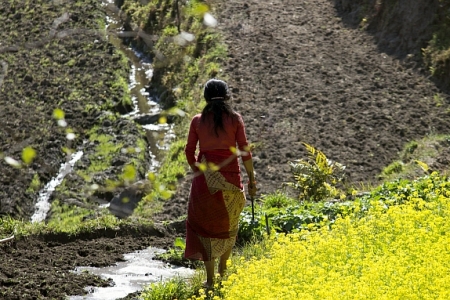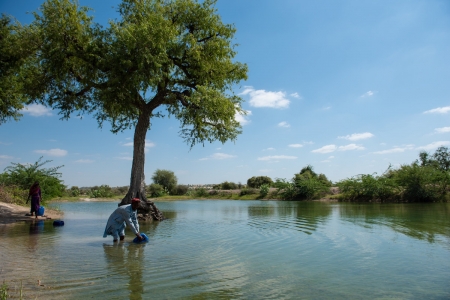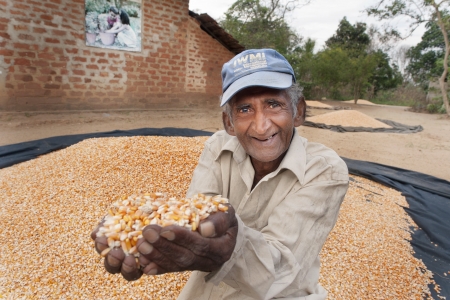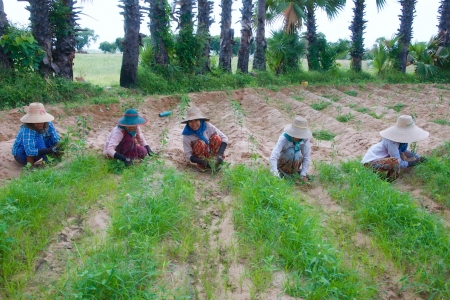Nearly half a million people migrated from Nepal in the last decade between 2000 and 2010. December 18th was International Day of Migrants, which coincided with the Asia Policy Dialogue organized in Guangzhou, China by WLE, the International Water Management Institute (IWMI) and the South China Agricultural University (SCAU), with financial assistance from the Stockholm Environment Institute (SEI) and the Government of Sweden. This important dialogue, which brought together experts from over ten countries, focused on outmigration, changing demographics in rural areas and the impact on agriculture and natural resource management in Asia. Ranking as the fourth most climate-vulnerable country in the world according to the World Bank, Nepal is exposed to a high level of water stress and climate variability which will increase the challenges faced by agricultural communities and could result in distress migration.
Water and agriculture in the hills
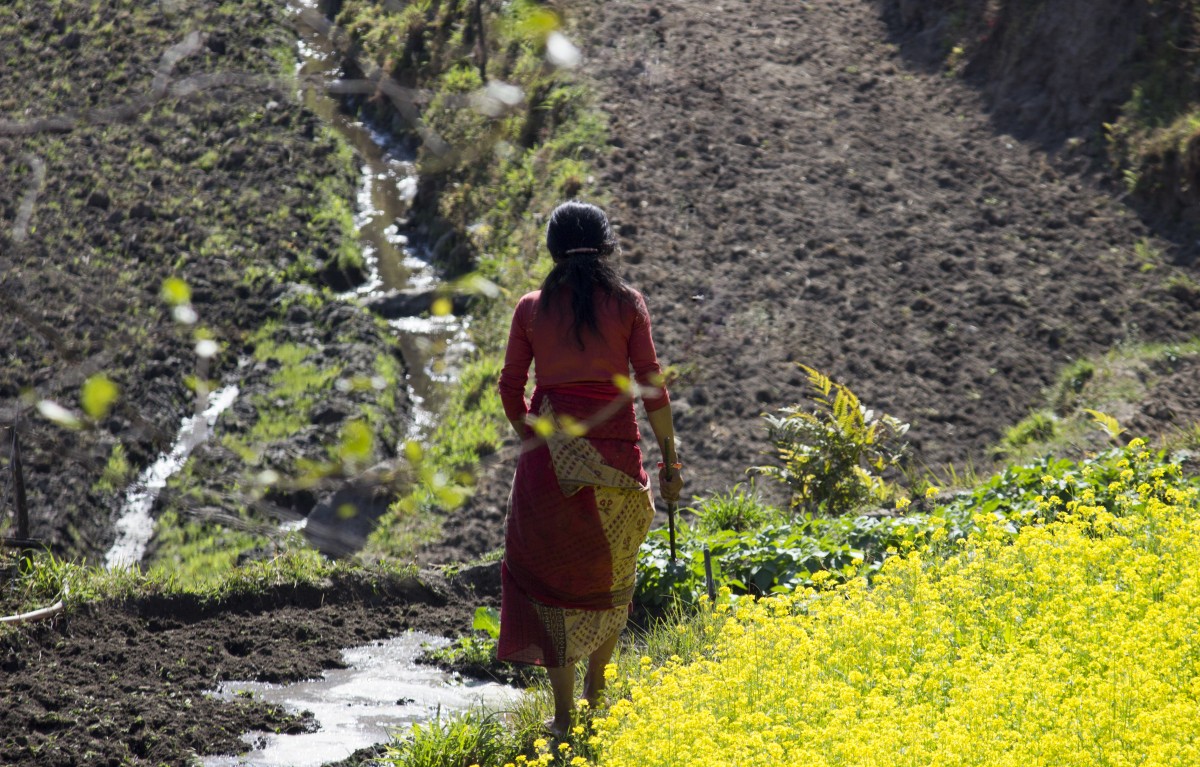 Irrigation in the hills of Nepal is rain fed and depends on water from rivers, rivulets and springs. With groundwater pumping not feasible, crops are grown using water from springs channelized through canals or artificial open ponds which are far and few in between. According to the National Sample Census of Agriculture in 2001/02, canal irrigation covers around 95% of the irrigated area. However, canal irrigation system is expensive to develop in the hills and can be vulnerable to seasonal fluctuations. It has limited utility for vast number of Nepalese hill communities who are situated on ridge lines, far above perennial flowing water resources. (Source: IWMI Research Report 159)
Irrigation in the hills of Nepal is rain fed and depends on water from rivers, rivulets and springs. With groundwater pumping not feasible, crops are grown using water from springs channelized through canals or artificial open ponds which are far and few in between. According to the National Sample Census of Agriculture in 2001/02, canal irrigation covers around 95% of the irrigated area. However, canal irrigation system is expensive to develop in the hills and can be vulnerable to seasonal fluctuations. It has limited utility for vast number of Nepalese hill communities who are situated on ridge lines, far above perennial flowing water resources. (Source: IWMI Research Report 159)
The uncertainty of water combined with climate change and deeply entrenched social structures of class, caste and gender has deep implications on the agrarian stress and outmigration to search for better opportunities.
(Photo by Nitasha Nair/IWMI)
Migration – a dual livelihood strategy
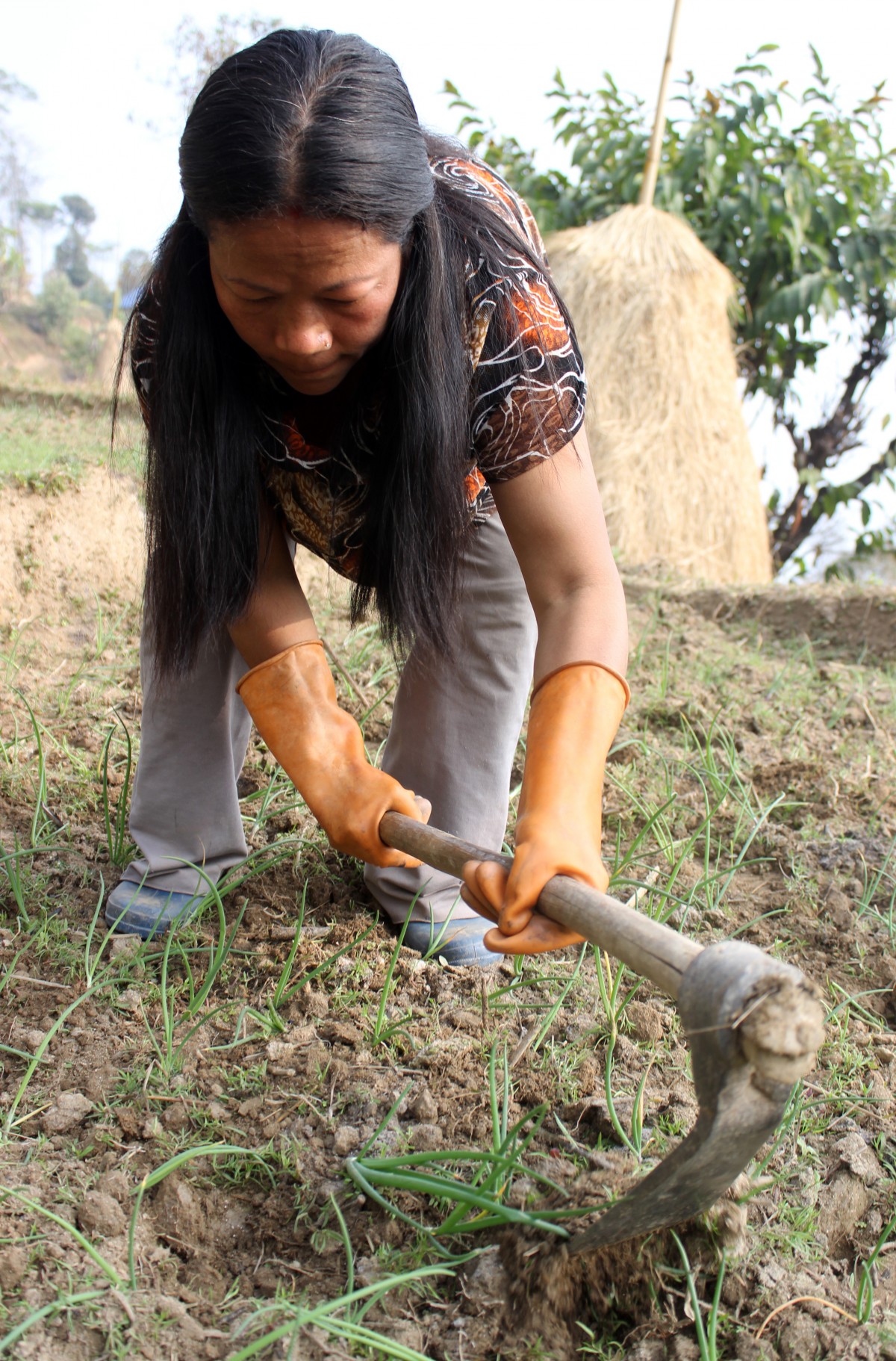 “Migration is aspirational for a lot of young men in the village. The good thing about Migration is that it brings in money and helps eating and living better. The bad part is that the society looks down upon women who live alone, it is difficult to get labour to work on fields.”
“Migration is aspirational for a lot of young men in the village. The good thing about Migration is that it brings in money and helps eating and living better. The bad part is that the society looks down upon women who live alone, it is difficult to get labour to work on fields.”
Nirmala Rai from Bhojpur district works in a local school as a primary school teacher. She is proud of her students who are learning English. Her husband out migrated for four years to Malaysia and came back. She owns small pieces of land where she farms onions and paddy.
(Photo by Alan Nicol/IWMI)
Multiple roles
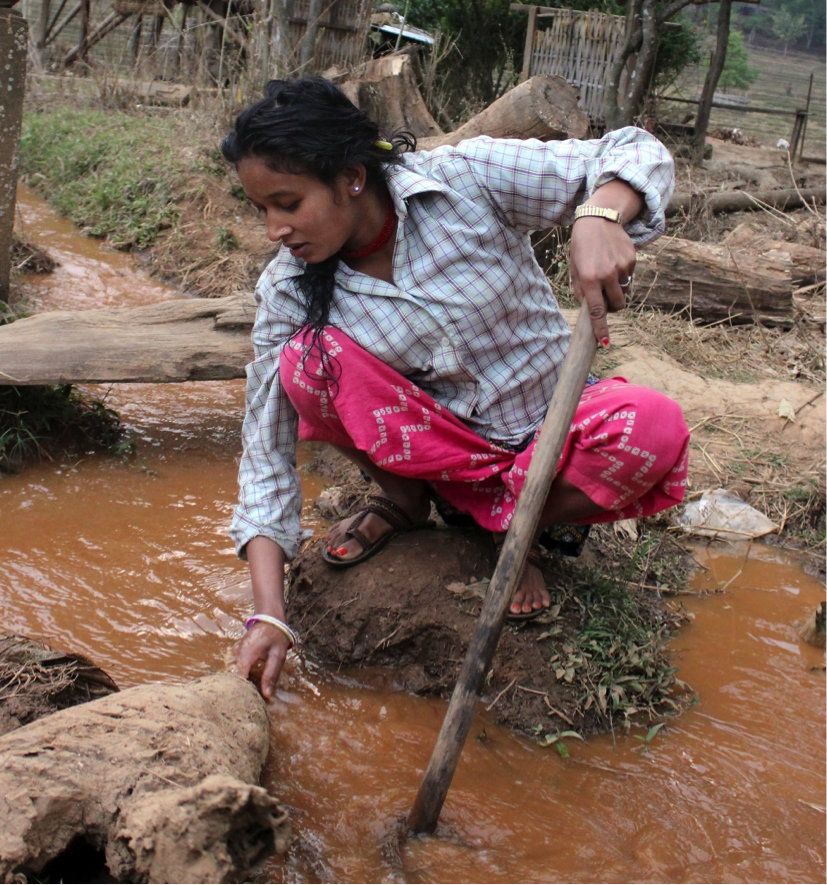 “I stay with my husband’s family here, my husband is working in Qatar. I generally unclog this irrigation channel so that the water can flow smoothly to fields.”
“I stay with my husband’s family here, my husband is working in Qatar. I generally unclog this irrigation channel so that the water can flow smoothly to fields.”
Tarah Luhar, Badhare, Bhojpur
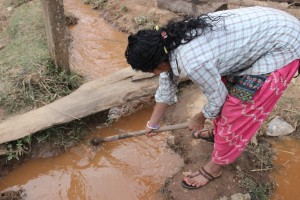
(Photos by Nitasha Nair/IWMI)
The vicious cycle of debt
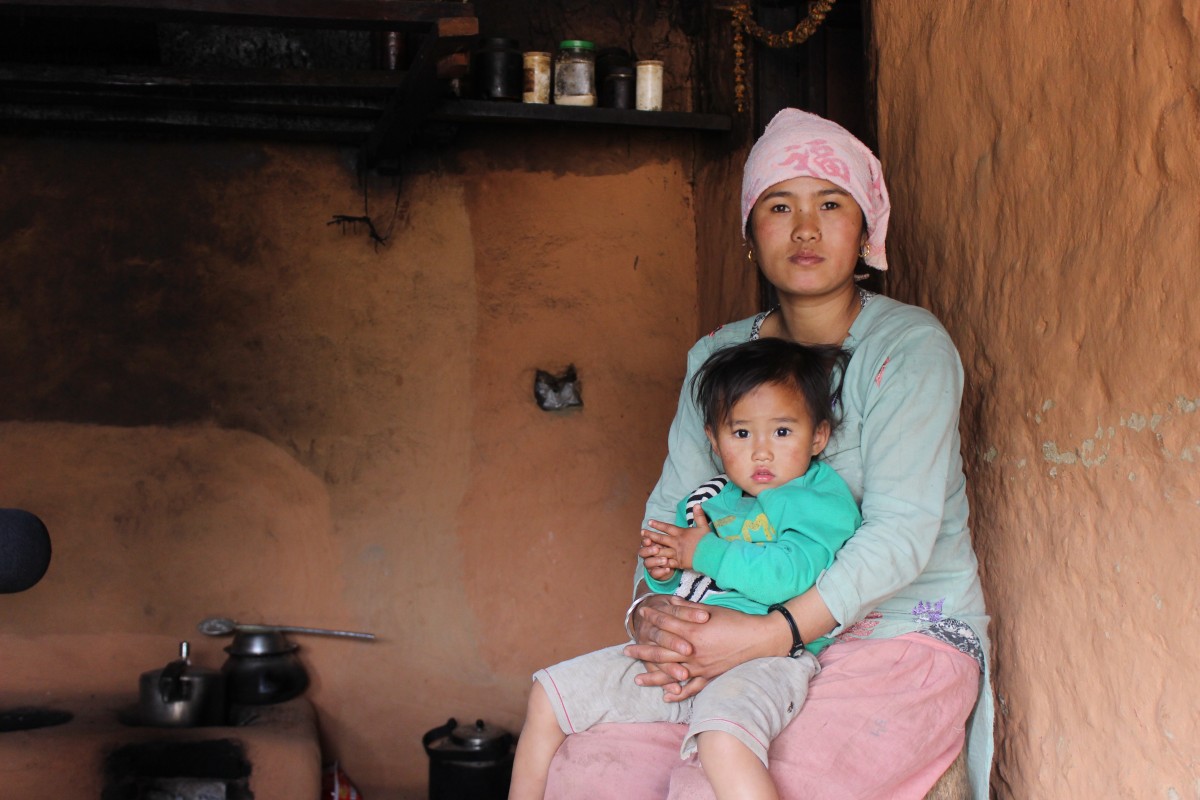 “We took a 2 lakh loan to enable my husband to go outside. He doesn’t really send back that much money as he doesn’t earn much, he was promised 900 Malaysian rupees but he is paid only 500 Malaysian rupees.”
“We took a 2 lakh loan to enable my husband to go outside. He doesn’t really send back that much money as he doesn’t earn much, he was promised 900 Malaysian rupees but he is paid only 500 Malaysian rupees.”
30 year old Chandra Kumari Tamang in Kimalung with her youngest child. Her husband has migrated to Malaysia leaving her behind with 4 small children. She manages both agricultural activities and looking after her family.
(Photo by Nitasha Nair/IWMI)
Changing consumption patterns
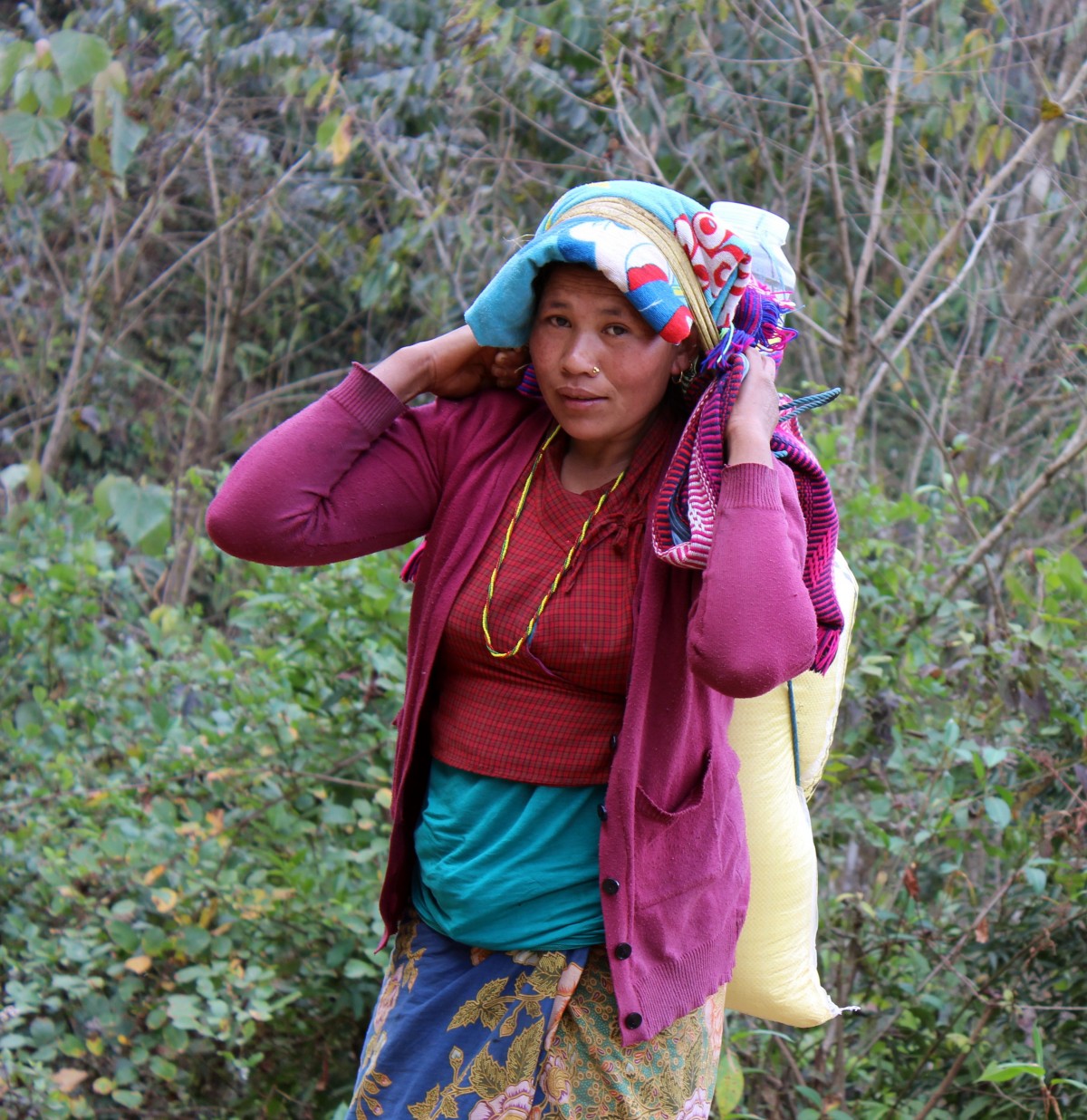 Consumption of rice has become a sign of success and status in villages of Nepal. Women like the one here are left with the responsibility of carrying heavy sacks of rice to villages in high altitudes like Kimalung village.
Consumption of rice has become a sign of success and status in villages of Nepal. Women like the one here are left with the responsibility of carrying heavy sacks of rice to villages in high altitudes like Kimalung village.
(Photo by Nitasha Nair/IWMI)
Greater consumerism
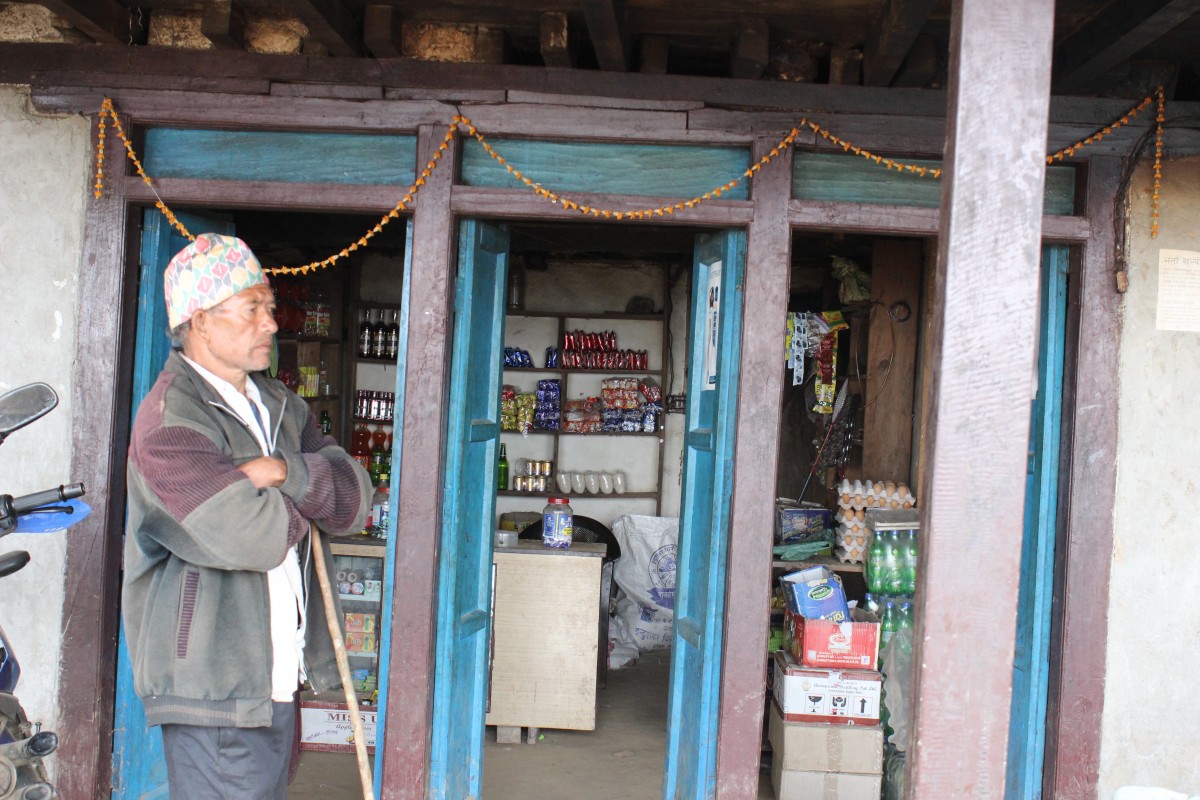 With migration one can see demand and infiltration of commercial products stocked up in shops in the remotest corners of villages. Noodles and other processed foods or branded everyday-use products are commonly found in these small “general” stores.
With migration one can see demand and infiltration of commercial products stocked up in shops in the remotest corners of villages. Noodles and other processed foods or branded everyday-use products are commonly found in these small “general” stores.
(Photo by Nitasha Nair/IWMI)
Women's empowerment – one step further?
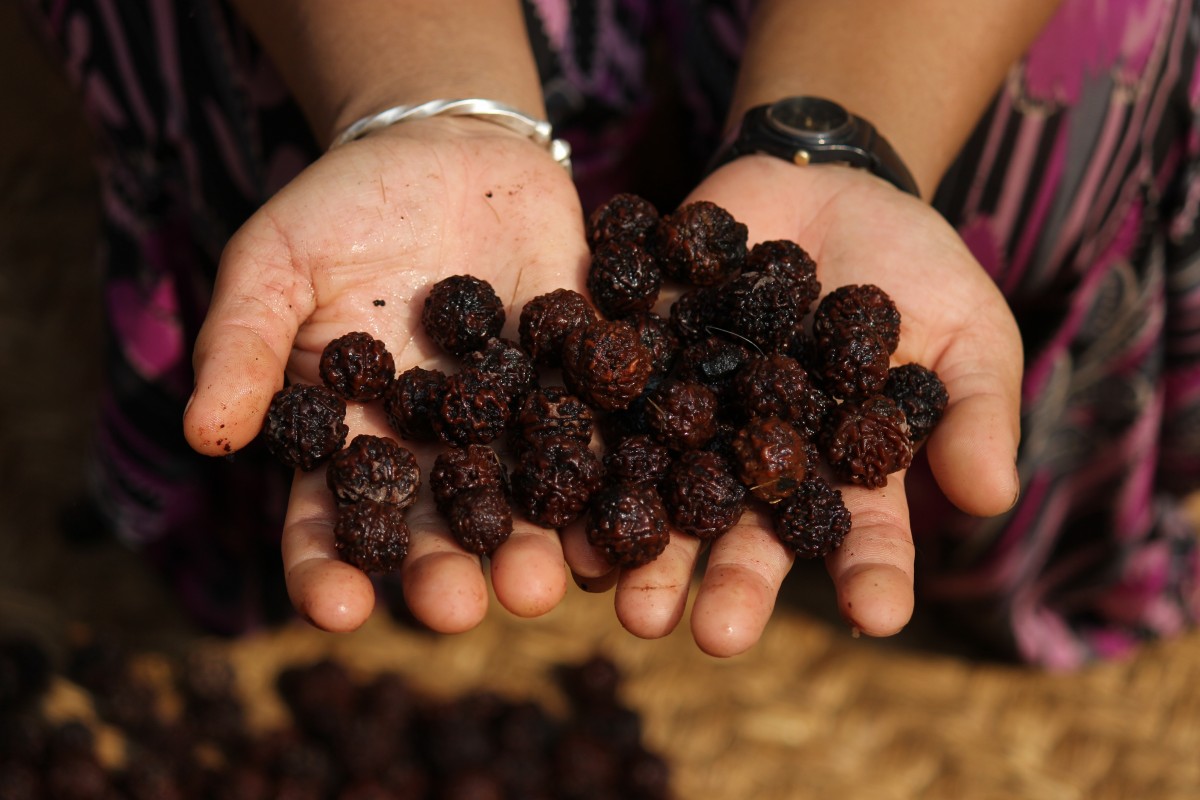 Beena Magar, a Rudhraksh farmer in a village in mid-altitude earns a decent living from farming Rudraksh beads, which are popular in India and China as religious artefacts.
Beena Magar, a Rudhraksh farmer in a village in mid-altitude earns a decent living from farming Rudraksh beads, which are popular in India and China as religious artefacts.
Rudraksha farming is highly profitable and has caught on in the middle and lower altitude villages in the eastern hilly districts, mostly Bhojpur and Sankhwasabha in Nepal. Rudraksha beads that are particularly aesthetically pleasing (based on shape, weight and groves) fetch lakhs of rupees. The normal variety also seems to have a good market. However, locals have reported that the influx of traders has decreased since last year, reducing the income from Rudrakshya for many. This has raised questions on whether Rudrakshya can be a sustainable source of income.
(Photo by Nitasha Nair/IWMI)
With men migrating, women are actively taking on roles which were traditionally held by men, for example attending community meetings. However, they face many challenges managing societal perceptions, juggling multiple roles and dealing with increased workloads. The challenge now is to mainstream women in the decision making process and equip them with necessary skills to tackle these the new gender landscape.
Interested in the effects of Migration? Read more:



